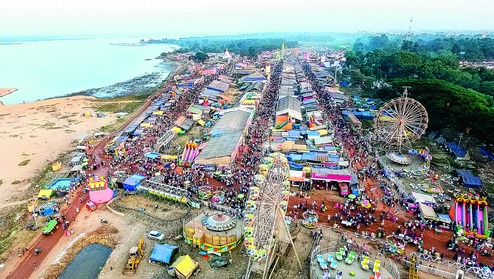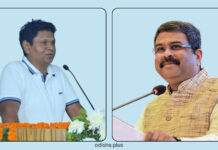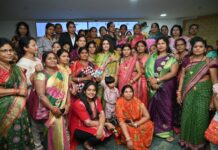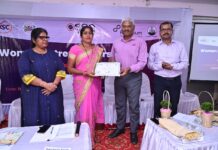Dipak Samantarai

Today is Kartika Purnima. An auspicious day in the Hindu calendar. It’s also the day on which Guru Nanak Dev was born.
In the wee hours of the night/morning women of our state, especially the married ones, go to the nearest water holes and sail paper boats with lamps lit on them. This is a symbolic ritual that reminds of a real act, seeing off of Sadhabapua setting sail to distant lands for trade and cultural exchanges.
Some otherwise informed intellectuals question the veracity of this connect. It’s true that the Odia sailors have not ensured that their stories be made available to the future generations in the shape of inscriptions as the kings and rulers have done. But a closer analysis of the comparative cultures of Odisha with our ‘supposed’ trade partners tells a different tale. The maritime history of Kalinga sailors lies littered in the islands of Indonesia, Malaysia, and Cambodia. The celebration of popular festivals of a similar nature reinforces it.

The presence and the prowess of the Kalinga merchants, of which the state of Odisha used to be an integral part of, was so well known that Kalidas has referred to the King of Kalinga in his Raghuvamsa. He has called him Mahodadhipati (the Lord of the Sea).
Aryamanjusrimulakalpa, a Buddhist Mahayana text, talks of Kalingaodresu “all islands of the Kalinga Sea”. Historians think that the eastern part of the modern Bay of Bengal was known as Kalinga Sea in the distant past. And the ships of Kalinga did have a dominant presence there.
Biju Patnaik, the iconic Odia leader, took up a bold initiative to revive the age-old relationship with Bali and other Indonesian islands and retrace the ancient trade route in 1992/93. It is worthwhile to recollect in brief how Biju Patnaik’s Kalinga Bali Jatra took off.
INS Samudra, a sailing yacht was readied for the voyage by the Indian Navy at the request of the government of Odisha. It had to travel from Paradip Port to Bali. Five crew members of the Navy were joined by two Odia civilians for the trip. The civilians were selected through advertisements in newspapers. The team went through rigorous training for undertaking the voyage. A series of cultural activities were planned around the event.
The ship set sail on the10th of November 1992, after being flagged off by the then Chief Minister of Odisha, Biju Pattnaik amidst a befitting cultural extravaganza.INS Samudra touched Gopalpur, Visakhapatnam, Madras, then entered Campbell bell (Nicobar Island) and reached Benoa Harbour. It did call on the ports of Penang, Jakarta, and Surabaya located in Indonesia.
After an adventurous, sometimes dangerous, voyage, the yacht arrived at the Benoa Harbor and received a very warm welcome by the Governor of Bali and several other officials and the general public on the 31st of January, 1993.
The voyage did have its share of hardships and troubles. Snapping of the chain of the steel rudder, choppy sea, unfavorable weather conditions, mechanical failures were handled by the team admirably well. Patience, expertise, training, everything combined together came to their rescue.

A number of cultural events showcasing the maritime history of the two people and their cultural ties were put on display.
On 3rd of February,1993, after an event- studded stay of a month, the yacht cast-off ceremonially for the return journey. And reached Paradip after more than forty days of traveling. Whether the voyage succeeded in giving a fillip to tourism or not is perhaps debatable. But it certainly revived interest in the ancient maritime activities of Kalinga. Cut to the Present. Cuttack Bali Jatra got a State Fair tag after much hullabaloo this year. It reiterates the well-known indifference and apathy of the citizenry, bureaucrats and the political class.
Let’s lapse into selective amnesia for a few days and soak in the sight, smell and sound of a unique fair, Bali Jatra.
(The writer is Former Director National Academy of Broadcasting and Multimedia Staff Training Institute, AIR & DD, Bhubaneswar)






















Superb Dipak. Very well depicted the spirit of the time.
In Bali, the prayers of the priests mention names of two rivers- Mahanadi and Mahendra Tanaya. Apart from this, there is an inscribed pillar in Bali, where the script is in pre-Nagari , a script once used in Kalinga. To be fair, this script was also used at that time from Chittagong to Kalingapatnam. However, in a temple in Bhubaneswar, there is the carving of a Dwarapala, showing a kris( small knife used in Malaysia, Indonesia, etc. It is the only such description in entire India, as known now. I guess these facts speak for themselves.
Excellent Deepak. You have brought the Kartika Poornima in the right direction.
Excellent presentation of culture and tradition of Balijatra. Worth reading. Thanks, Deepak babu.